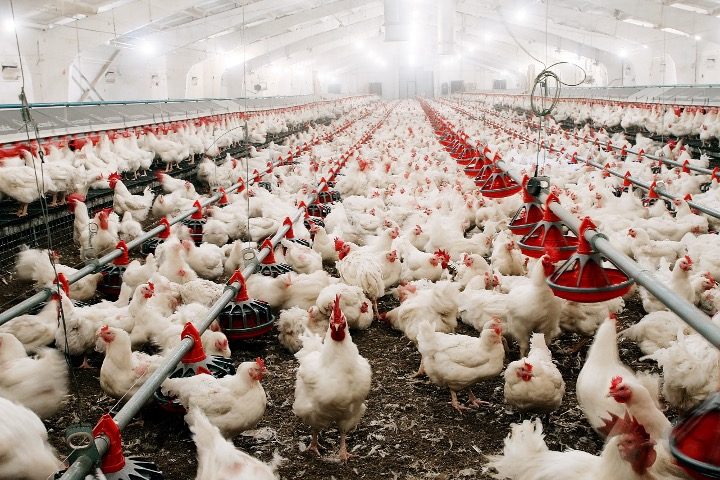
The recent spread of bird flu, or Highly Pathogenic Avian Influenza (HPAI), among poultry and dairy farms has intensified concerns among health officials about the risks posed by current methods of culling and disposing of infected birds. These concerns focus on the potential for these processes to further spread the virus to humans and livestock. A July 19 Reuters report highlighted alarming practices such as dumping carcasses in landfills and using methods to kill chickens that expose workers to the virus.
Farm Practices Under Scrutiny
Recent data obtained by Reuters, along with interviews with officials and disease experts, underscore the dangers associated with the current disposal methods for infected birds. Instances of farms disposing of carcasses in landfills have drawn criticism for the potential environmental contamination and the risk of the virus spreading to other animals and humans. Additionally, methods such as the asphyxiation of chickens using carbon dioxide, which requires workers to be in close proximity to the birds, have come under fire for their inadequate protective measures.
One particularly concerning case occurred on a Colorado poultry farm, where hot weather made it challenging for workers to wear their protective gear during the asphyxiation process. According to Reuters, this “likely” contributed to the “largest cluster of human bird flu cases” in the United States. Five workers in Weld County have contracted the virus. All of the workers reportedly displayed mild symptoms, including pink eye, cough, sore throat and runny nose. None of the infected required hospitalization.
On July 8, Governor Jared Polis verbally declared a disaster emergency, with the Colorado Department of Agriculture ordering the culling of 1.78 million chickens.
Colorado’s Case: A Closer Look
“Bird flu has migrated to nearly every U.S. state over the past 2.5 years. There have been nine cases among poultry and dairy workers since March, including the Colorado poultry workers,” reported Reuters. The Colorado Department of Agriculture told the news service that the method of killing birds is decided jointly between the state, the farmer, and the U.S. Department of Agriculture (USDA). The sick workers in Colorado were using mobile gas chamber carts to kill the birds, as explained by Julie Gauthier, an official at the USDA’s Animal and Plant Health Inspection Service. These carts can typically accommodate between a dozen and 50 birds, and workers asphyxiate them batch by batch.
In Colorado, more than 150 workers were exposed to infected poultry. Sixty-nine displayed symptoms, and five tested positive for HPAI, said AnneMarie Harper, communications director at the Colorado Department of Public Health and Environment. Most chickens are killed by asphyxiation. This is done either with portable chambers like those used in Colorado, by spraying a firefighting foam on the birds, or by shutting down ventilation to the chicken barns, according to the USDA’s HPAI Response Plan. Other methods include shooting, cervical dislocation, and other means.
Disposing of the Dead Chickens
Reuters explained that most infected chickens are composted:
Most of the culled birds are composted, either in chicken houses or on farms, or buried, according to the USDA data. To compost the birds, farmers cover them in material like wood shavings, maintain the compost piles at a high temperature, and stir them occasionally with farm equipment in a process that typically takes several weeks.
John Clifford, a former USDA chief veterinarian and an advisor for the USA Poultry & Egg Export Council, emphasized that federal and state officials work with farmers to determine the best disposal methods. Composting on-site is considered safest to avoid moving the carcasses and potentially spreading the virus, according to Myah Walker, compliance unit supervisor at the Minnesota Board of Animal Health, who spoke with Reuters.
In rarer cases, carcasses are transported to landfills, meeting some federal and state regulations. However, this practice has faced criticism.
America’s 10th largest egg producer, Herbruck’s Poultry Ranch, disposed of nearly two million chickens in private landfills between April 15 and June 8, according to USDA data and Michigan state records quoted by Reuters. This disposal method raised concerns when a dairy farm near one of the landfills tested positive for bird flu, even though “whole genome sequencing showed the disposed Herbruck’s carcasses did not cause the infection,” per the outlet.
Another risk is the spread of the virus from carcasses to wild birds. Brian Hoefs, the state veterinarian for Minnesota, cautioned against disposing of dead poultry in landfills, describing it as “a recipe for disaster” due to the attraction of scavengers.
Risk for People
The risk of bird flu to the general public remains low, according to the U.S. Centers for Disease Control and Prevention (CDC). Only nine human infections have been registered in three states since 2022.
At the same time, the massive culling of chickens raises alarm with regard to food supply and prices. According to Reuters, approximately 95 million chickens, turkeys, and other poultry have been killed and disposed of since February 2022. The deadliest year was 2022, but nearly as many chickens have been disposed of so far in 2024 as in all of 2023.
The barbaric methods of chicken culling and disposal described above seem especially redundant since the USDA provides in its food safety guidelines that consuming eggs or chickens that were sick with bird flu is considered safe as long as the poultry or eggs are properly cooked. Cooking poultry to an internal temperature of at least 165°F kills the virus along with other pathogens, says the agency. However, handling raw poultry can pose a risk if proper hygiene and food safety practices are not followed. It underscores the importance of washing hands, utensils, and surfaces thoroughly after handling raw poultry to prevent cross-contamination.
According to the CDC, the H5N1 strain of HPAI has been confirmed in 163 dairy herds in 13 states. Bird flu has been detected in over 100,405,000 wild aquatic birds, commercial poultry, and backyard or hobbyist flocks in 48 states since January 2022.
Western countries consider H5N1 to have strong pandemic potential because of its possible mutations, and are ramping up vaccine production.

































 Reaction & Commentary
Reaction & Commentary



















